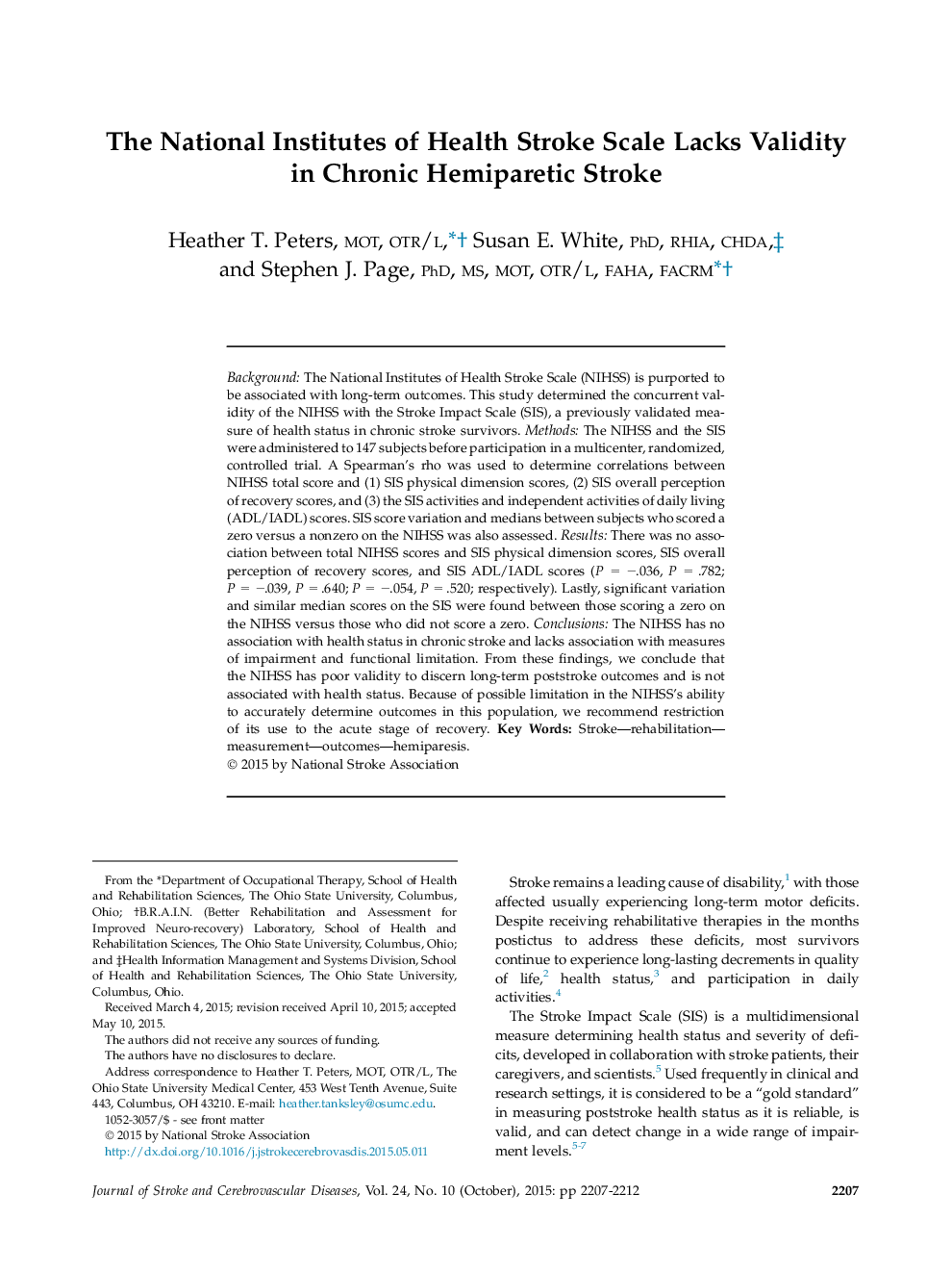| Article ID | Journal | Published Year | Pages | File Type |
|---|---|---|---|---|
| 2709957 | Journal of Stroke and Cerebrovascular Diseases | 2015 | 6 Pages |
BackgroundThe National Institutes of Health Stroke Scale (NIHSS) is purported to be associated with long-term outcomes. This study determined the concurrent validity of the NIHSS with the Stroke Impact Scale (SIS), a previously validated measure of health status in chronic stroke survivors.MethodsThe NIHSS and the SIS were administered to 147 subjects before participation in a multicenter, randomized, controlled trial. A Spearman's rho was used to determine correlations between NIHSS total score and (1) SIS physical dimension scores, (2) SIS overall perception of recovery scores, and (3) the SIS activities and independent activities of daily living (ADL/IADL) scores. SIS score variation and medians between subjects who scored a zero versus a nonzero on the NIHSS was also assessed.ResultsThere was no association between total NIHSS scores and SIS physical dimension scores, SIS overall perception of recovery scores, and SIS ADL/IADL scores (P = −.036, P = .782; P = −.039, P = .640; P = −.054, P = .520; respectively). Lastly, significant variation and similar median scores on the SIS were found between those scoring a zero on the NIHSS versus those who did not score a zero.ConclusionsThe NIHSS has no association with health status in chronic stroke and lacks association with measures of impairment and functional limitation. From these findings, we conclude that the NIHSS has poor validity to discern long-term poststroke outcomes and is not associated with health status. Because of possible limitation in the NIHSS's ability to accurately determine outcomes in this population, we recommend restriction of its use to the acute stage of recovery.
